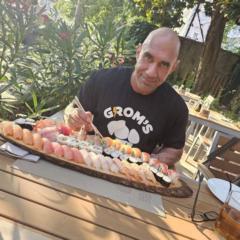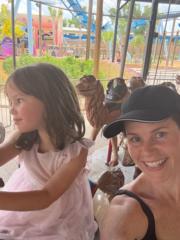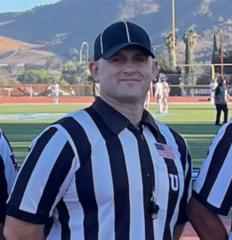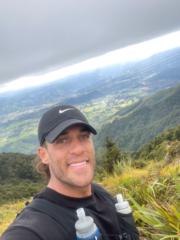15d • Ask Anthony Anything
Kidney Article Part 5 — The Protocol
Stories are only as powerful as the actions they inspire. In the first part of this series, we followed the earliest domino of kidney disease back to the mitochondria, where stress piled up until adaptation became maladaptation. In the second part, we mapped out the signaling pathways the master switches of energy, growth, inflammation, and repair that tilt health toward decline when balance is lost. In the third part, we looked at the biomarkers, the fingerprints left behind by falling dominoes, and saw how they let us measure stress long before kidneys reach crisis. In the fourth part, we climbed the intervention pyramid, starting with the free but foundational acts of sleep and stress repair, moving through exercise and nutrition, and ending with advanced tools like peptides and devices.
Now it’s time to bring everything together into a practical framework. Cellular medicine is not about chasing symptoms; it’s about restoring the cell’s ability to adapt. That means sequencing interventions in a way that stabilizes the base before layering in complexity. It means aligning choices with molecular mechanisms, so that every hour of sleep, every meal, every training session, and every carefully chosen compound feeds into the same theme: nudging mitochondria back into resilience, quieting maladaptive signals, and protecting the delicate sieves that filter our blood.
Let’s imagine the cell not as a machine but as a city. The mitochondria are its power plants, the endothelial cells its bridges, the immune signals its alarm systems, and the sirtuins its seasoned repair crews. In kidney disease, the power plants are overloaded, the bridges are cracking, the alarms are stuck blaring, and the repair crews are underpaid and understaffed. Our goal is not to replace the city it’s to re-train it, re-fuel it, and restore harmony between its systems.
The protocol that follows is built on four layers, like the pyramid described earlier. Each layer feeds into the next. Lifestyle calibrates the environment. Exercise builds capacity. Nutrition signals adaptation. Advanced tools accelerate resilience. None of these can work alone; together, they create synergy. And synergy is what the kidney, an organ of fine balance, requires. Here’s how it comes together in practice:
Cellular Medicine Protocol for Kidney Disease
Foundational Lifestyle (Base Layer)
- Sleep: 7–9 hours nightly, consistent bedtime and wake time, protect deep sleep with darkness and cool room temperature. Mechanism: restores NAD+, activates SIRT1/3, promotes growth hormone pulses for repair.
2. Circadian Repair: Morning sunlight within 30 minutes of waking, limit blue light at night. Mechanism: resets AMPK and melatonin rhythms, stabilizes redox and mitochondrial biogenesis.
3. Stress Modulation: Daily practice of breath work, meditation, or HRV training. Mechanism: lowers cortisol, reduces NF-κB activation, improves NO bioavailability, and supports endothelial repair.
Exercise (Second Layer)
- Zone 2 Cardio: 30–45 minutes, 3x per week. Mechanism: activates AMPK and PGC-1α, expands mitochondrial density, improves fat oxidation and metabolic flexibility.
- Resistance Training: 2–3x per week, major muscle groups, moderate load. Mechanism: pulses mTORC1 for protein synthesis, improves GLUT4 expression and insulin sensitivity, maintains lean mass as a glucose sink.
3. HIIT: 1x per week, short intervals with long recovery. Mechanism: engages HIF-1α, promotes angiogenesis, improves VO₂max without chronic stress.
Nutrition (Third Layer)
- Mediterranean Pattern: Emphasize vegetables, olive oil, nuts, berries, legumes, and fatty fish. Mechanism: polyphenols activate AMPK/Nrf2, omega-3s resolve inflammation, antioxidants support redox balance.
- Protein: ~1.2–1.6 g/kg/day tailored to stage of kidney disease. Mechanism: supports repair through adaptive mTOR pulses, prevents muscle wasting, maintains insulin sensitivity.
- Omega-3 Fatty Acids: 2–4 g/day EPA+DHA (diet and/or supplement). Mechanism: inserts into cell membranes, generates resolvins/protectins to resolve inflammation, improves membrane fluidity.
- Fiber: ≥30 g/day, diverse sources. Mechanism: feeds microbiome, increases SCFA production, reduces LPS leakage, and lowers systemic inflammation.
Advanced Tools (Peak Layer)
Peptides:
- Thymosin α1 (Supported): Restores immune tone, balances Th1/Th2, reduces chronic NF-κB drive.
- Thymosin β4 (Supported): Promotes endothelial and vascular repair, supports angiogenesis, reduces fibrosis.
- SS-31 (Supported): Binds cardiolipin in IMM, stabilizes electron transport, reduces ROS leakage, restores ATP efficiency.
4. BPC-157 (Preclinical): Experimental support for vascular and microcirculatory repair.
Small Molecules / Pharmaceuticals:
- Rapamycin (Supported in aging trials): Dampens chronic mTORC1 activation, preserves autophagy.
Supplements:
1. Ketone Esters (Emerging): Increases NAD+/NADH ratio, activates SIRT3, reduces ROS.
2. Berberine AMPK activator, improves metabolic efficiency, reduces mTORC1 overdrive.
3. NAD+ Precursors (Supported): 1-MNA, 5amino-1MQ.
4. Magnesium (Supported): Cofactor for ATP metabolism, stabilizes endothelial function.
5. Polyphenols (Supported): Green tea catechins, resveratrol, quercetin—AMPK and Nrf2 activators.
Devices / Modalities:
- Red Light Therapy (Supported): Stimulates cytochrome c oxidase, enhances ATP production, reduces ROS leakage.
- Sauna (Supported): Induces heat shock proteins, triggers autophagy, improves vascular compliance.
- PEMF (Emerging): Modulates redox state and circulation, early promise in microvascular health.
This protocol is not meant as a rigid prescription but as a layered strategy. The base is non-negotiable sleep, circadian rhythm, and stress repair provide the platform. Exercise and nutrition create signaling inputs that retrain pathways. Advanced tools are powerful but only synergize when the base layers are solid.
What this approach represents is a shift in thinking. Instead of waiting for eGFR to fall or creatinine to rise, instead of reacting to the last domino, we intervene upstream. We listen to the biomarkers, respect the sentinel mitochondria, and rebuild adaptation before maladaptation takes root.
Kidney disease, reframed in this way, becomes a call to precision, not despair. Every night of quality sleep, every Zone 2 session, every Mediterranean-style meal, every carefully chosen peptide or molecule is not just a “treatment” it is a nudge to the mitochondria, a whisper to the immune system, a recalibration of endothelial tone. It is reminding the cell that adaptation is possible again.
12
9 comments

skool.com/castore-built-to-adapt-7414
Where science meets results. Learn peptides, training, recovery & more. No ego, no fluff—just smarter bodies, better minds, built to adapt.
Powered by





